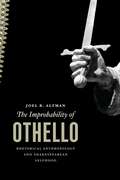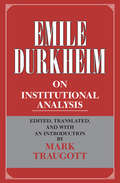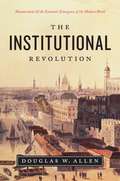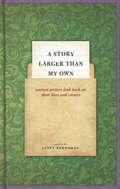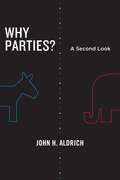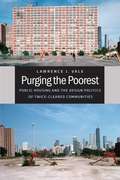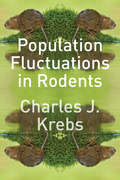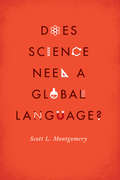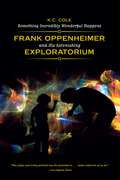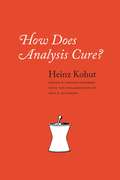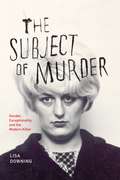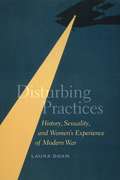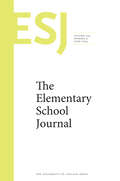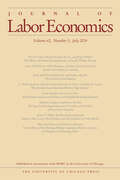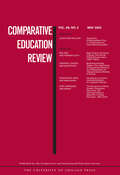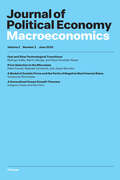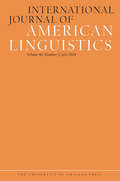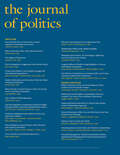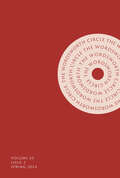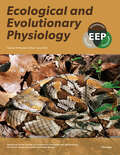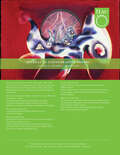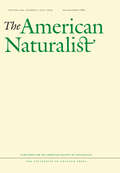- Table View
- List View
The Improbability of Othello: Rhetorical Anthropology and Shakespearean Selfhood
by Joel B. AltmanShakespeare’s dramatis personae exist in a world of supposition, struggling to connect knowledge that cannot be had, judgments that must be made, and actions that need to be taken. For them, probability—what they and others might be persuaded to believe—governs human affairs, not certainty. Yet negotiating the space of probability is fraught with difficulty. Here, Joel B. Altman explores the problematics of probability and the psychology of persuasion in Renaissance rhetoric and Shakespeare’s theater.Focusing on the Tragedy of Othello, Altman investigates Shakespeare’s representation of the self as a specific realization of tensions pervading the rhetorical culture in which he was educated and practiced his craft. In Altman’s account, Shakespeare also restrains and energizes his audiences’ probabilizing capacities, alternately playing the skeptical critic and dramaturgic trickster. A monumental work of scholarship by one of America’s most respected scholars of Renaissance literature, The Improbability of Othello contributes fresh ideas to our understanding of Shakespeare’s conception of the self, his shaping of audience response, and the relationship of actors to his texts.
On Institutional Analysis (Heritage Of Sociology Ser.)
by Emile DurkheimRanging from Durkheim's original lecture in sociology to an excerpt from the work incomplete at his death, these selections illuminate his multiple approaches to the crucial concept of social solidarity and the study of institutions as diverse as the law, morality, and the family. Durkheim's focus on social solidarity convinced him that sociology must investigate the way that individual behavior itself is the product of social forces. As these writings make clear, Durkheim pursued his powerful model of sociology through many fields, eventually synthesizing both materialist and idealist viewpoints into his functionalist model of society.
The Institutional Revolution: Measurement and the Economic Emergence of the Modern World (Markets And Governments In Economic Hist Ser.)
by Douglas W. AllenFew events in the history of humanity rival the Industrial Revolution. Following its onset in eighteenth-century Britain, sweeping changes in agriculture, manufacturing, transportation, and technology began to gain unstoppable momentum throughout Europe, North America, and eventually much of the world—with profound effects on socioeconomic and cultural conditions.In The Institutional Revolution, Douglas W. Allen offers a thought-provoking account of another, quieter revolution that took place at the end of the eighteenth century and allowed for the full exploitation of the many new technological innovations. Fundamental to this shift were dramatic changes in institutions, or the rules that govern society, which reflected significant improvements in the ability to measure performance—whether of government officials, laborers, or naval officers—thereby reducing the role of nature and the hazards of variance in daily affairs. Along the way, Allen provides readers with a fascinating explanation of the critical roles played by seemingly bizarre institutions, from dueling to the purchase of one’s rank in the British Army. Engagingly written, The Institutional Revolution traces the dramatic shift from premodern institutions based on patronage, purchase, and personal ties toward modern institutions based on standardization, merit, and wage labor—a shift which was crucial to the explosive economic growth of the Industrial Revolution.
A Story Larger than My Own: Women Writers Look Back on Their Lives and Careers
by Janet BurrowayIn 1955, Maxine Kumin submitted a poem to the Saturday Evening Post. “Lines on a Half-Painted House” made it into the magazine—but not before Kumin was asked to produce, via her husband’s employer, verification that the poem was her original work. Kumin, who went on to win the Pulitzer Prize for poetry, was part of a groundbreaking generation of women writers who came of age during the midcentury feminist movement. By challenging the status quo and ultimately finding success for themselves, they paved the way for future generations of writers. In A Story Larger than My Own, Janet Burroway brings together Kumin, Julia Alvarez, Jane Smiley, Erica Jong, and fifteen other accomplished women of this generation to reflect on their writing lives. The essays and poems featured in this collection illustrate that even writers who achieve critical and commercial success experience a familiar pattern of highs and lows over the course of their careers. Along with success comes the pressure to sustain it, as well as a constant search for subject matter, all too frequent crises of confidence, the challenges of a changing publishing scene, and the difficulty of combining writing with the ordinary stuff of life—family, marriage, jobs. The contributors, all now over the age of sixty, also confront the effects of aging, with its paradoxical duality of new limitations and newfound freedom. Taken together, these stories offer advice from experience to writers at all stages of their careers and serve as a collective memoir of a truly remarkable generation of women.
Still: American Silent Motion Picture Photography
by David S. ShieldsThe success of movies like The Artist and Hugo recreated the wonder and magic of silent film for modern audiences, many of whom might never have experienced a movie without sound. But while the American silent movie was one of the most significant popular art forms of the modern age, it is also one that is largely lost to us, as more than eighty percent of silent films have disappeared, the victims of age, disaster, and neglect. We now know about many of these cinematic masterpieces only from the collections of still portraits and production photographs that were originally created for publicity and reference. Capturing the beauty, horror, and moodiness of silent motion pictures, these images are remarkable pieces of art in their own right. In the first history of still camera work generated by the American silent motion picture industry, David S. Shields chronicles the evolution of silent film aesthetics, glamour, and publicity, and provides unparalleled insight into this influential body of popular imagery. Exploring the work of over sixty camera artists, Still recovers the stories of the photographers who descended on early Hollywood and the stars and starlets who sat for them between 1908 and 1928. Focusing on the most culturally influential types of photographs—the performer portrait and the scene still—Shields follows photographers such as Albert Witzel and W. F. Seely as they devised the poses that newspapers and magazines would bring to Americans, who mimicked the sultry stares and dangerous glances of silent stars. He uncovers scene shots of unprecedented splendor—visions that would ignite the popular imagination. And he details how still photographs changed the film industry, whose growing preoccupation with artistry in imagery caused directors and stars to hire celebrated stage photographers and transformed cameramen into bankable names. Reproducing over one hundred and fifty of these gorgeous black-and-white photographs, Still brings to life an entire long-lost visual culture that a century later still has the power to enchant.
Why Parties?: A Second Look (Chicago Studies In American Politics Ser.)
by John H. AldrichSince its first appearance fifteen years ago, Why Parties? has become essential reading for anyone wishing to understand the nature of American political parties. In the interim, the party system has undergone some radical changes. In this landmark book, now rewritten for the new millennium, John H. Aldrich goes beyond the clamor of arguments over whether American political parties are in resurgence or decline and undertakes a wholesale reexamination of the foundations of the American party system.Surveying critical episodes in the development of American political parties—from their formation in the 1790s to the Civil War—Aldrich shows how they serve to combat three fundamental problems of democracy: how to regulate the number of people seeking public office, how to mobilize voters, and how to achieve and maintain the majorities needed to accomplish goals once in office. Aldrich brings this innovative account up to the present by looking at the profound changes in the character of political parties since World War II, especially in light of ongoing contemporary transformations, including the rise of the Republican Party in the South, and what those changes accomplish, such as the Obama Health Care plan. Finally, Why Parties? A Second Look offers a fuller consideration of party systems in general, especially the two-party system in the United States, and explains why this system is necessary for effective democracy.
Purging the Poorest: Public Housing and the Design Politics of Twice-Cleared Communities (Historical Studies Of Urban America Ser.)
by Lawrence J. ValeThe building and management of public housing is often seen as a signal failure of American public policy, but this is a vastly oversimplified view. In Purging the Poorest, Lawrence J. Vale offers a new narrative of the seventy-five-year struggle to house the “deserving poor.”In the 1930s, two iconic American cities, Atlanta and Chicago, demolished their slums and established some of this country’s first public housing. Six decades later, these same cities also led the way in clearing public housing itself. Vale’s groundbreaking history of these “twice-cleared” communities provides unprecedented detail about the development, decline, and redevelopment of two of America’s most famous housing projects: Chicago’s Cabrini-Green and Atlanta’s Techwood /Clark Howell Homes. Vale offers the novel concept of design politics to show how issues of architecture and urbanism are intimately bound up in thinking about policy. Drawing from extensive archival research and in-depth interviews, Vale recalibrates the larger cultural role of public housing, revalues the contributions of public housing residents, and reconsiders the role of design and designers.
Population Fluctuations in Rodents
by Charles J. KrebsHow did rodent outbreaks in Germany help to end World War I? What caused the destructive outbreak of rodents in Oregon and California in the late 1950s, the large population outbreak of lemmings in Scandinavia in 2010, and the great abundance of field mice in Scotland in the spring of 2011? Population fluctuations, or outbreaks, of rodents constitute one of the classic problems of animal ecology, and in Population Fluctuations in Rodents, Charles J. Krebs sifts through the last eighty years of research to draw out exactly what we know about rodent outbreaks and what should be the agenda for future research. Krebs has synthesized the research in this area, focusing mainly on the voles and lemmings of the Northern Hemisphere—his primary area of expertise—but also referring to the literature on rats and mice. He covers the patterns of changes in reproduction and mortality and the mechanisms that cause these changes—including predation, disease, food shortage, and social behavior—and discusses how landscapes can affect population changes, methodically presenting the hypotheses related to each topic before determining whether or not the data supports them. He ends on an expansive note, by turning his gaze outward and discussing how the research on rodent populations can apply to other terrestrial mammals. Geared toward advanced undergraduate students, graduate students, and practicing ecologists interested in rodent population studies, this book will also appeal to researchers seeking to manage rodent populations and to understand outbreaks in both natural and urban settings—or, conversely, to protect endangered species.
Does Science Need a Global Language?: English and the Future of Research
by Scott L. MontgomeryIn early 2012, the global scientific community erupted with news that the elusive Higgs boson had likely been found, providing potent validation for the Standard Model of how the universe works. Scientists from more than one hundred countries contributed to this discovery—proving, beyond any doubt, that a new era in science had arrived, an era of multinationalism and cooperative reach. Globalization, the Internet, and digital technology all play a role in making this new era possible, but something more fundamental is also at work. In all scientific endeavors lies the ancient drive for sharing ideas and knowledge, and now this can be accomplished in a single tongue— English. But is this a good thing? In Does Science Need a Global Language?, Scott L. Montgomery seeks to answer this question by investigating the phenomenon of global English in science, how and why it came about, the forms in which it appears, what advantages and disadvantages it brings, and what its future might be. He also examines the consequences of a global tongue, considering especially emerging and developing nations, where research is still at a relatively early stage and English is not yet firmly established. Throughout the book, he includes important insights from a broad range of perspectives in linguistics, history, education, geopolitics, and more. Each chapter includes striking and revealing anecdotes from the front-line experiences of today’s scientists, some of whom have struggled with the reality of global scientific English. He explores topics such as student mobility, publication trends, world Englishes, language endangerment, and second language learning, among many others. What he uncovers will challenge readers to rethink their assumptions about the direction of contemporary science, as well as its future.
Something Incredibly Wonderful Happens: Frank Oppenheimer and His Astonishing Exploratorium
by K.C. ColeHow do we reclaim our innate enchantment with the world? And how can we turn our natural curiosity into a deep, abiding love for knowledge? Frank Oppenheimer, the younger brother of the physicist J. Robert Oppenheimer, was captivated by these questions, and used his own intellectual inquisitiveness to found the Exploratorium, a powerfully influential museum of human awareness in San Francisco, that encourages play, creativity, and discovery—all in the name of understanding. In this elegant biography, K. C. Cole investigates the man behind the museum with sharp insight and deep sympathy. The Oppenheimers were a family with great wealth and education, and Frank, like his older brother, pursued a career in physics. But while Robert was unceasingly ambitious, and eventually came to be known for his work on the atomic bomb, Frank’s path as a scientist was much less conventional. His brief fling with the Communist Party cost him his position at the University of Minnesota, and he subsequently spent a decade ranching in Colorado before returning to teaching. Once back in the lab, however, Frank found himself moved to create something to make the world meaningful after the bombing of Hiroshima and Nagasaki. He was inspired by European science museums, and he developed a dream of teaching Americans about science through participatory museums. Thus was born the magical world of the Exploratorium, forever revolutionizing not only the way we experience museums, but also science education for years to come. Cole has brought this charismatic and dynamic figure to life with vibrant prose and rich insight into Oppenheimer as both a scientist and an individual.
How Does Analysis Cure?
by Heinz Kohut Paul E. StepanskyThe Austro-American psychoanalyst Heinz Kohut was one of the foremost leaders in his field and developed the school of self-psychology, which sets aside the Freudian explanations for behavior and looks instead at self/object relationships and empathy in order to shed light on human behavior. In How Does Analysis Cure? Kohut presents the theoretical framework for self-psychology, and carefully lays out how the self develops over the course of time. Kohut also specifically defines healthy and unhealthy cases of Oedipal complexes and narcissism, while investigating the nature of analysis itself as treatment for pathologies. This in-depth examination of “the talking cure” explores the lesser studied phenomena of psychoanalysis, including when it is beneficial for analyses to be left unfinished, and the changing definition of “normal.” An important work for working psychoanalysts, this book is important not only for psychologists, but also for anyone interested in the complex inner workings of the human psyche.
The Subject of Murder: Gender, Exceptionality, and the Modern Killer
by Lisa DowningThe subject of murder has always held a particular fascination for us. But, since at least the nineteenth century, we have seen the murderer as different from the ordinary citizen—a special individual, like an artist or a genius, who exists apart from the moral majority, a sovereign self who obeys only the destructive urge, sometimes even commanding cult followings. In contemporary culture, we continue to believe that there is something different and exceptional about killers, but is the murderer such a distinctive type? Are they degenerate beasts or supermen as they have been depicted on the page and the screen? Or are murderers something else entirely?In The Subject of Murder, Lisa Downing explores the ways in which the figure of the murderer has been made to signify a specific kind of social subject in Western modernity. Drawing on the work of Foucault in her studies of the lives and crimes of killers in Europe and the United States, Downing interrogates the meanings of media and texts produced about and by murderers. Upending the usual treatment of murderers as isolated figures or exceptional individuals, Downing argues that they are ordinary people, reflections of our society at the intersections of gender, agency, desire, and violence.
Disturbing Practices: History, Sexuality, and Women's Experience of Modern War
by Laura DoanFor decades, the history of sexuality has been a multidisciplinary project serving competing agendas. Lesbian, gay, and queer scholars have produced powerful narratives by tracing the homosexual or queer subject as continuous or discontinuous. Yet organizing historical work around categories of identity as normal or abnormal often obscures how sexual matters were known or talked about in the past. Set against the backdrop of women’s work experiences, friendships, and communities during World War I, Disturbing Practices draws on a substantial body of new archival material to expose the roadblocks still present in current practices and imagine new alternatives.In this landmark book, Laura Doan clarifies the ethical value and political purpose of identity history—and indeed its very capacity to give rise to innovative practices borne of sustained exchange between queer studies and critical history. Disturbing Practices insists on taking seriously the imperative to step outside the logic of identity to address questions as yet unasked about the modern sexual past.
The Elementary School Journal, volume 124 number 4 (June 2024)
by The Elementary School JournalThis is volume 124 issue 4 of The Elementary School Journal. The Elementary School Journal (ESJ) has served researchers, teacher educators, and practitioners in the elementary and middle school education for more than one hundred years. ESJ publishes peer-reviewed articles that pertain to both education theory and research and their implications for teaching practice. In addition, ESJ presents articles that relate the latest research in child development, cognitive psychology, and sociology to school learning and teaching.
Journal of Labor Economics, volume 42 number 3 (July 2024)
by Journal of Labor EconomicsThis is volume 42 issue 3 of Journal of Labor Economics. Founded in 1983 as the first journal devoted specifically to labor economics, the Journal of Labor Economics (JOLE) presents international research on issues affecting social and private behavior, and the economy. JOLE’s contributors investigate various aspects of labor economics, including supply and demand of labor services, personnel economics, distribution of income, unions and collective bargaining, applied and policy issues in labor economics, and labor markets and demographics.
Comparative Education Review, volume 68 number 2 (May 2024)
by Comparative Education ReviewThis is volume 68 issue 2 of Comparative Education Review. The Comparative Education Review (CER) is the flagship journal of the Comparative and International Education Society. Its editorial team pursues greater critical engagement, interrogation and innovation in the field of comparative and international education. The journal publishes intellectually rigorous original research in both theoretical and practical applications, seeking representation across sexual, ethnic, cultural and religious diversity. Further, the editors seek to advance the field by bringing greater awareness to discourses on education across the lifespan in historically underrepresented regions, contexts, and topics. CER promotes multidisciplinary research, valuing diverse perspectives and methodologies in order to expand and transgress current ways of knowing and understanding education throughout the world. Through publishing eclectic scholarship, the CER editorial team seeks to engage a wide-ranging community of scholars, practitioners, and policy-makers.
Journal of Political Economy Macroeconomics, volume 2 number 2 (June 2024)
by Journal of Political Economy MacroeconomicsThis is volume 2 issue 2 of Journal of Political Economy Macroeconomics. Journal of Political Economy Macroeconomics (JPE Macro) strives to publish high-quality theoretical and empirical research papers that address issues of relevance to macroeconomics. Macroeconomics is interpreted in a broad sense and includes issues related to the traditional macroeconomic topics of growth, fluctuations, and distribution, as well as issues that connect and interact with topics from monetary economics, labor economics, finance, trade, international economics, industrial organization, political economy, public finance, and development economics.
International Journal of American Linguistics, volume 90 number 3 (July 2024)
by International Journal of American LinguisticsThis is volume 90 issue 3 of International Journal of American Linguistics. The International Journal of American Linguistics (IJAL) is dedicated to the documentation and analysis of the indigenous languages of the Americas. Founded by Franz Boas and Pliny Earle Goddard in 1917, the journal focuses on the linguistics of American Indigenous languages. IJAL is an important repository for research based on field work and archival materials on the languages of North and South America.
Journal of the Association for Consumer Research, volume 9 number 3 (July 2024)
by Journal of the Association for Consumer ResearchThis is volume 9 issue 3 of Journal of the Association for Consumer Research. The Journal of the Association for Consumer Research (JACR) publishes quarterly thematic issues exploring unique topics in consumer behavior. The mission of JACR is to broaden the intellectual scope and interdisciplinary influence of the Association for Consumer Research. Each issue of JACR has a well-defined theme, chosen from the broad substantive, managerial, and methodological topics relevant to understanding consumer behavior; and each issue is directed by a different team of editors who, with their relevant experience and expertise, are best poised to assemble outstanding articles around that theme.
The Journal of Politics, volume 86 number 3 (July 2024)
by The Journal of PoliticsThis is volume 86 issue 3 of The Journal of Politics. Established in 1939 and published for the Southern Political Science Association, The Journal of Politics is a leading general-interest journal of political science and the oldest regional political science journal in the United States. The scholarship published in The Journal of Politics is theoretically innovative and methodologically diverse, and comprises a blend of the various intellectual approaches that make up the discipline. The Journal of Politics features balanced treatments of research from scholars around the world, in all subfields of political science including American politics, comparative politics, international relations, political theory, and political methodology.
The Wordsworth Circle, volume 55 number 2 (Spring 2024)
by The Wordsworth CircleThis is volume 55 issue 2 of The Wordsworth Circle. The Wordsworth Circle (TWC) is an international quarterly learned journal founded in 1970 to facilitate communications among colleagues interested in the lives, works, and times of British, American, and European writers from 1770 to 1850, before and after. TWC publishes original essays, conference papers, letters, editions, bibliographies, textual and historical scholarship, biography, interpretive criticism, and critical theory, as well as interdisciplinary, cultural, and comparative studies. It is concerned with anything that influenced, impinges upon, expresses, or contributes to an understanding of the writers, works, and events associated with Romantic studies and its after-lives.
Ecological and Evolutionary Physiology, volume 97 number 3 (May/June 2024)
by Ecological and Evolutionary PhysiologyThis is volume 97 issue 3 of Ecological and Evolutionary Physiology. Ecological and Evolutionary Physiology primarily publishes original research in physiological ecology, ecophysiology, comparative physiology, and evolutionary physiology. Studies at all levels of biological organization from the molecular to the whole organism are welcome, and work that integrates across levels of organization is particularly encouraged. Studies that focus on behavior or morphology are welcome, so long as they include ties to physiology or biochemistry, in addition to having an ecological or evolutionary context. Subdisciplines of interest include nutrition and digestion, salt and water balance, epithelial and membrane transport, gas exchange and transport, acid-base balance, temperature adaptation, energetics, structure and function of macromolecules, chemical coordination and signal transduction, nitrogen metabolism and excretion, locomotion and muscle function, biomechanics, circulation, behavioral, comparative and mechanistic endocrinology, sensory physiology, neural coordination, and ecotoxicology ecoimmunology.
HAU: Journal of Ethnographic Theory, volume 14 number 1 (Spring 2024)
by HAU: Journal of Ethnographic TheoryThis is volume 14 issue 1 of HAU: Journal of Ethnographic Theory. HAU: Journal of Ethnographic Theory, is an international journal which aims to situate ethnography as the prime heuristic of anthropology, and return it to the forefront of conceptual developments in the discipline. The journal is motivated by the need to reinstate ethnographic theorization in contemporary anthropology as a potent alternative to its "explanation" or "contextualization" by philosophical arguments, moves which have resulted in a loss of the discipline's distinctive theoretical nerve. By drawing out its potential to critically engage and challenge Western cosmological assumptions and conceptual determinations, HAU aims to provide an exciting new arena for evaluating ethnography as a daring enterprise for 'worlding' alien terms and forms of life, by exploiting their potential for rethinking humanity and alterity.
The American Naturalist, volume 204 number 1 (July 2024)
by The American NaturalistThis is volume 204 issue 1 of The American Naturalist. Since its inception in 1867, The American Naturalist has maintained its position as one of the world’s premier peer-reviewed publications in ecology, evolution, and behavior research. Its goals are to publish articles that are of broad interest to the readership, pose new and significant problems, introduce novel subjects, develop conceptual unification, and change the way people think. The American Naturalist emphasizes sophisticated methodologies and innovative theoretical syntheses — all in an effort to advance the knowledge of organic evolution and other broad biological principles.
Bulletin of the American Society of Overseas Research, volume 391 number 1 (May 2024)
by Bulletin of the American Society of Overseas ResearchThis is volume 391 issue 1 of Bulletin of the American Society of Overseas Research. The Bulletin of ASOR (BASOR) is a leader among peer-reviewed academic journals of the ancient Near East. For nearly a century, since 1919 when William F. Albright originally founded it as the Bulletin of the American School of Oriental Research in Jerusalem, BASOR has served as a highly respected interdisciplinary English-language forum for scholars worldwide in subject areas such as archaeology, art, anthropology, archaeometry, bioarchaeology, archaeozoology, biblical studies, history, literature, philology, geography, and epigraphy.
